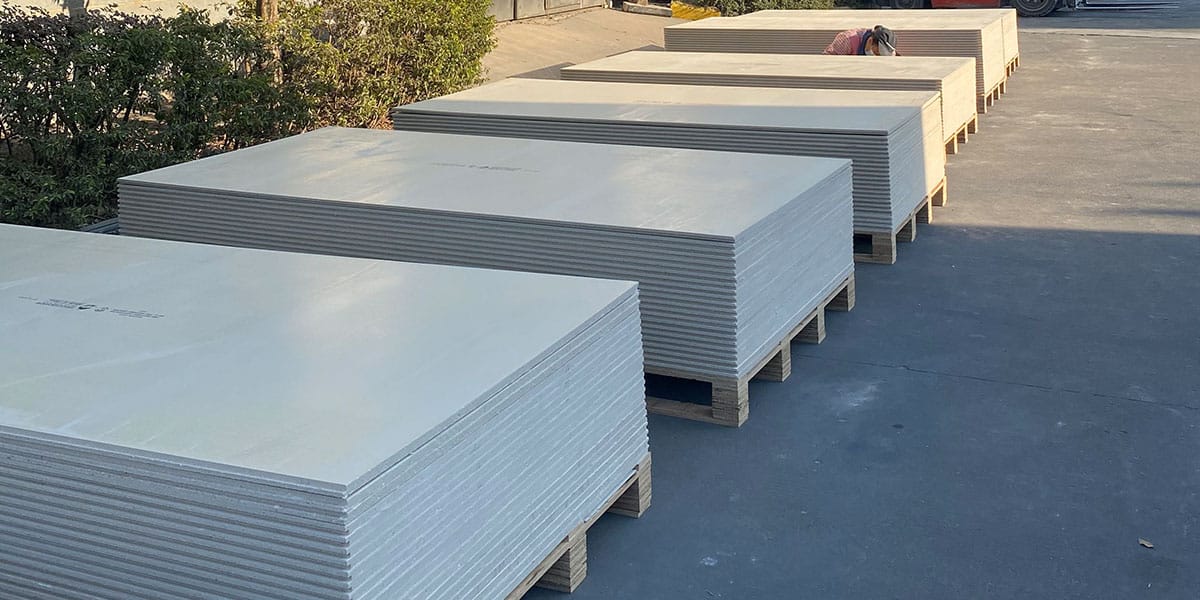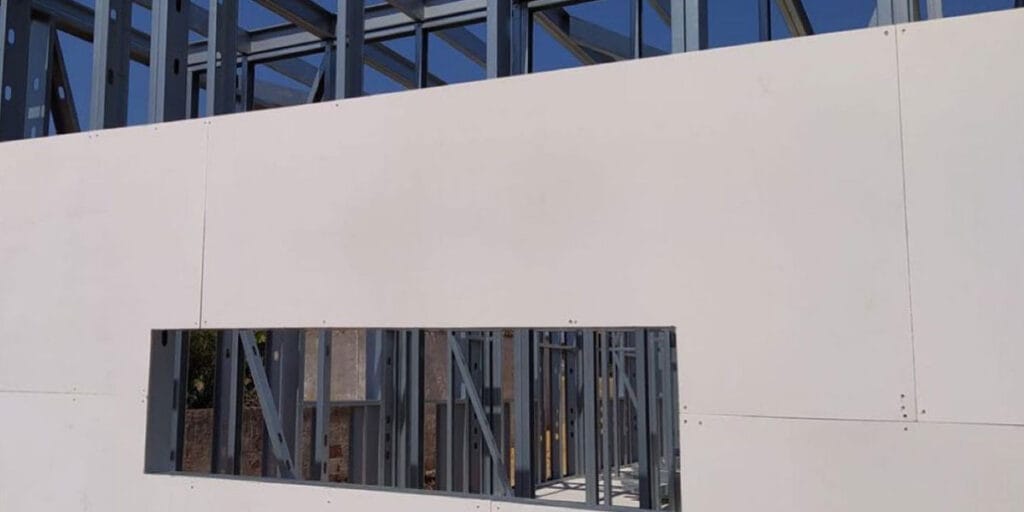
23 Jun The Science of Magnesium Oxide Boards and Their Performance in Construction
Table of Contents
Magnesium oxide boards are changing how buildings are made today. They are strong, long-lasting, and resist fire and water. You may ask why they are so popular now. In 2023, the global market for these boards was worth over $1.8 billion. Experts think it will grow to almost $2.41 billion by 2030. This means it will grow about 4.2% each year. This growth shows they are used more for safer, greener buildings. Their special features make them a top choice for new building ideas.
Key Takeaways
Magnesium oxide boards are tough, fireproof, and waterproof, perfect for building today.
These boards are good for the environment and made from natural stuff.
They help save energy in homes and buildings.
MgO boards block noise well, making places quieter to live or work.
Using these boards makes buildings safer and eco-friendly.
They are simple to put up, light, and can be used in many ways.
Understanding Magnesium Oxide Boards
What Are Magnesium Oxide Boards?
Magnesium oxide boards are strong and useful building materials. They are made from magnesium oxide, a mineral found in nature. Manufacturers mix this mineral with other materials and add fibers for strength. The result is a lightweight and tough board. These boards work well in many building projects.
Here’s a simple look at their main features:
Feature | What It Means |
|---|---|
Fire Resistance | They don’t burn and can resist fire for up to 3 hours. |
Moisture Resistance | They stay strong in wet areas and don’t soak up water. |
Environmental Friendliness | Made from natural stuff, no harmful chemicals, and save energy during production. |
Durability | They don’t rust, break down, or change shape easily. |
Easy Installation | They are light, easy to cut, and quick to install. |
Sound Insulation | They block noise well, making spaces quieter. |
Insect and Mould Proof | They stop mold, bacteria, and termites from growing on them. |
These features make them a smart choice for today’s buildings.
What Makes Magnesium Oxide Boards Special?
You might wonder why these boards are better than others. Their special qualities come from how they are made. Unlike plywood, which bends or swells when wet, these boards stay strong and keep their shape. They also handle fire better than gypsum boards, lasting up to three hours in flames.
Another great thing is they are eco-friendly. They are made from safe, natural materials and don’t harm the environment. They also stop termites, mold, and bacteria, which is helpful in damp or bug-prone areas. Plus, they block noise, making homes quieter and more peaceful.
Choosing magnesium oxide boards means picking a material that is strong, safe, and good for the planet. They meet global standards and perform better than many other materials, making them a big deal in construction today.
Scientific Composition of Magnesium Oxide Boards
Main Materials: Magnesium Oxide and Other Additives
Magnesium oxide boards, also called MgO boards, are made from special materials. The main ingredient is magnesium oxide (MgO), a natural mineral. This mineral is turned into a fine powder to form the board’s base. To make it better, manufacturers add materials like magnesium chloride, perlite, and fiberglass mesh.
Each added material has a job to do. Magnesium chloride helps hold the board together under pressure. Perlite, a light volcanic glass, makes the board weigh less and keeps heat out. Fiberglass mesh strengthens the board, stopping cracks and bends. These materials work together to make the board strong, long-lasting, and useful.
Why does this mix work so well? The answer is in the way magnesium oxide reacts with the additives. Together, they create a solid structure that resists water, fire, and pests. This makes sure MgO boards stay strong and useful, even in tough conditions.
Chemical Properties and Reactions
The chemical makeup of MgO boards makes them different from other materials. During production, magnesium oxide reacts with water to form magnesium hydroxide (Mg(OH)₂). This process, called hydration, makes the board strong and durable. Later, magnesium hydroxide reacts with carbon dioxide in the air to form magnesium carbonate (MgCO₃). This step, called carbonation, makes the board even more stable and tough.
Scientists have studied these reactions to understand MgO boards better. They used tools like X-ray diffraction (XRD) and thermo-gravimetric analysis (TGA). These studies showed that after 30 minutes of hydration, over 60% of the material turned into magnesium hydroxide. After 20 hours, this increased to over 70%. These results prove how quickly and effectively MgO boards change during production.
Study Method | What It Showed |
|---|---|
XRD Analysis | Found chemical changes in MgO and Mg(OH)₂ after hydration. |
TGA Analysis | Showed over 60% Mg(OH)₂ after 30 minutes, over 70% after 20 hours. |
Other Techniques | Used XRD, SEM/EDS, and TGA to study MgO particles’ properties. |
These reactions also help MgO boards resist fire. When heated, magnesium hydroxide releases water vapor. This cools the surface and slows down flames. This makes MgO boards great for fireproof buildings.
MgO boards also resist water damage. Unlike other materials, they don’t swell or break when wet. Their chemical makeup stops water from soaking in, keeping them strong in damp places. These chemical features show why MgO boards are a smart and modern choice for building projects.
Performance Characteristics of Magnesium Oxide Boards

Fire Resistance and Safety
Magnesium oxide boards are great at resisting fire. They can handle very high heat, making them safe for fireproof buildings. Tests show they resist fire for 2-3 hours at 800ºC. Some boards, like Magpanel, stay strong even after 30 minutes at over 750°C (1,382°F). They don’t even change color during this time.
These boards also have a 0/0 rating on the ASTM E84 / UL 723 test. This means they don’t spread flames or make harmful smoke. This makes them perfect for places like schools, hospitals, and homes where fire safety matters most.
Tip: Adding magnesium oxide boards to your building can improve fire safety. They help meet strict building rules and keep people safe.
Source | Fire Resistance Rating | Temperature Resistance | Testing Method |
|---|---|---|---|
Sulfycor | 2-3 hours | 800ºC | Grade A1 fire-rated testing |
Magpanel | A1 Fire Rating | >750°C for 30 minutes | Rigorous testing |
USG | Pass if <750°C | Multiple samples tested | Repeated testing procedure |
Water Resistance and Durability
Magnesium oxide boards are strong against water and last a long time. Unlike other materials, they don’t swell, bend, or crack when wet. Studies show they stay solid even after being in water for a long time. This makes them great for bathrooms, kitchens, and basements.
These boards also stay durable over time. While their surface may age a little, their core stays strong. They work well in all kinds of weather, from hot to cold. They resist humidity and temperature changes, making them useful in many climates.
Magnesium oxide panels survive harsh weather without damage.
They don’t crack, bend, or swell, staying reliable for years.
Their water resistance makes them perfect for damp areas.
Choosing magnesium oxide boards means your buildings will last longer, even in tough conditions.
Thermal Insulation and Energy Efficiency
Magnesium oxide boards help keep buildings warm in winter and cool in summer. They have high R-values, which measure how well they block heat. This reduces the need for heating and cooling systems, saving energy and money.
MgO structural insulated panels (SIPs) are especially good at stopping heat transfer. They make buildings more energy-efficient and eco-friendly. Using these boards can lower your carbon footprint and help the planet.
Note: Using magnesium oxide boards can save energy and cut utility costs over time.
Acoustic Performance and Soundproofing
Magnesium oxide boards (MgO boards) are tough and block noise well. They help make spaces quieter and more peaceful. Their special design stops sound from traveling through walls, floors, or ceilings. This makes them useful for homes and workplaces.
How Do MgO Boards Improve Acoustic Performance?
The boards are dense and solid, which reduces noise. They are made from magnesium oxide, minerals, bonders, and fiber mesh. These materials create a heavy board that absorbs sound waves. When sound hits the board, it stops vibrations and blocks noise.
For example, pairing a 13mm MgO board with 3mm mass-loaded vinyl improves soundproofing. This setup works well in places like offices, apartments, and studios where quiet is important.
Key Features Supporting Soundproofing
Here’s why MgO boards are great for blocking noise:
Feature | Description |
|---|---|
Material | Made of magnesium oxide, minerals, bonders, and fiber mesh. |
Thickness | 13mm MgO board with 3mm mass-loaded vinyl. |
Sound Insulation | Blocks noise due to its heavy structure. |
Fire Rating | Class A1 fire rating for safety. |
Environmental Safety | Free of harmful chemicals like asbestos or formaldehyde. |
Thicker boards or adding sound-dampening layers, like vinyl, improve soundproofing. This makes MgO boards a smart choice for quiet spaces.
Why Choose MgO Boards for Soundproofing?
MgO boards work better than drywall or plywood for blocking sound. They are lightweight but still strong. They don’t have harmful chemicals, so they’re safe indoors. Plus, they resist fire, making them safer for buildings needing both soundproofing and fire protection.
Tip: Use MgO boards for home theaters, offices, or apartments. They block noise and meet safety rules, creating a better living or working space.
Choosing magnesium oxide boards gives you quieter rooms and safer buildings. They also help keep the environment healthy.
Applications of Magnesium Oxide Boards in Construction
Uses in Walls, Ceilings, and Flooring
Magnesium oxide boards are useful for walls, ceilings, and floors. They work well in homes, offices, and factories. These boards are strong and resist fire and water, making them dependable.
Application Type | Description |
|---|---|
Residential Buildings | Used for safety, strength, and eco-friendly benefits. |
Commercial Buildings | Great for offices, malls, and hotels due to fire resistance. |
Industrial Buildings | Tough and durable, perfect for factories and warehouses. |
Specialized Projects | Ideal for schools, hospitals, and public spaces needing safety and hygiene. |
For walls, these boards create a smooth surface for paint or tiles. In ceilings, they block noise and resist fire, adding comfort and safety. For floors, they stay strong and resist water, making them great for kitchens and bathrooms.
Benefits for Sustainable Building Practices
Magnesium oxide boards are a smart choice for green building. They are made from natural materials and need less energy to produce. Their long life means fewer replacements, reducing waste.
These boards help with green certifications like LEED. They improve indoor air by not releasing harmful chemicals. Choosing these boards helps build eco-friendly spaces that are good for people and the planet.
Comparison with Traditional Materials
Magnesium oxide boards are better than drywall or plywood in many ways. Drywall breaks when wet, but these boards stay solid. Plywood can bend or attract termites, but these boards resist both. They also handle fire better than gypsum boards, making them safer.
Installing these boards is quick and easy. They are light but strong, saving time during construction. Their versatility and high performance make them a top pick for modern, sustainable buildings.
Sustainability and Environmental Impact of MgO Boards

Eco-Friendly Manufacturing Process
Magnesium oxide boards (MgO boards) are made in planet-friendly ways. They use magnesium oxide, a natural material found in seawater and brine pools. These resources are plentiful, making them a better choice than gypsum or cement.
Making MgO boards uses less energy, which helps the environment. During production, the boards absorb carbon dioxide from the air. This process makes the boards stronger and reduces greenhouse gases.
Main Benefits of MgO Board Production:
Uses natural and renewable materials.
Needs less energy to make.
Absorbs carbon dioxide while curing.
Choosing MgO boards means picking a material that helps the Earth stay healthy.
Contribution to Green Building Certifications
MgO boards can help buildings earn green certifications like LEED. They improve air quality because they don’t release harmful chemicals like formaldehyde or VOCs. Their long-lasting design means fewer replacements, which supports eco-friendly goals.
These boards also save energy by keeping buildings warm or cool. This lowers energy use and makes buildings greener. Adding MgO boards to your project helps meet strict environmental rules while creating better spaces to live or work.
Tip: Use MgO boards for projects aiming for green certifications. They mix great performance with care for the planet.
Recyclability and Waste Reduction
MgO boards are easy to recycle and don’t create much waste. When they’re no longer needed, they can be reused or broken down naturally. This keeps them out of landfills. Their magnesium can be recycled for other uses, like road bases or construction additives.
Waste Reduction Benefits:
Strong boards mean less waste during building.
Recyclable materials ease pressure on waste systems.
Safe disposal without harmful chemicals.
Using MgO boards supports a circular economy. Their ability to be reused makes them a smart pick for eco-friendly building projects.
Magnesium oxide boards use science to improve building methods. They are made with magnesium oxide and other materials for strength, fire safety, and water resistance. Unlike Portland cement, they need less energy, release fewer greenhouse gases, and even trap carbon while being made.
Comparison Metric | Magnesium Oxide (MgO) | Portland Cement |
|---|---|---|
Heating Temperature (°C) | Around 700 | Over 1450 |
50-70% | 100% | |
Energy Use | Lower | Higher |
Captures Carbon? | Yes | No |
These boards work well for walls, ceilings, and floors. They are strong and better for the environment. Their ability to be recycled and create little waste makes them great for green building. As construction changes, magnesium oxide boards are a smart and eco-friendly choice for safer spaces.
FAQ
1. Why don’t magnesium oxide boards catch fire?
When heated, they release water vapor. This cools the surface and slows flames. Their makeup stops burning and spreading fire, making them safe for fireproof buildings.
2. Can magnesium oxide boards handle wet places?
Yes, they resist water and stay strong. They don’t swell or crack, so they’re great for bathrooms, kitchens, and basements.
3. Are magnesium oxide boards good for the environment?
Yes! They are made from natural materials and need less energy to make. They also absorb carbon dioxide while curing and can be recycled, reducing waste.
4. How do magnesium oxide boards block noise?
Their solid design absorbs sound and stops vibrations. Adding soundproof layers, like vinyl, makes them even better for quiet spaces.
5. Are magnesium oxide boards simple to install?
Yes, they are light and easy to cut. They work well for walls, ceilings, and floors, making construction faster and easier.
